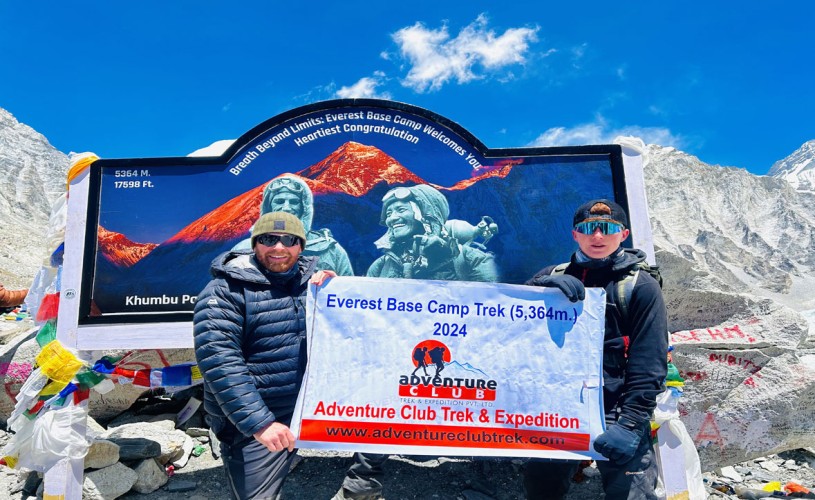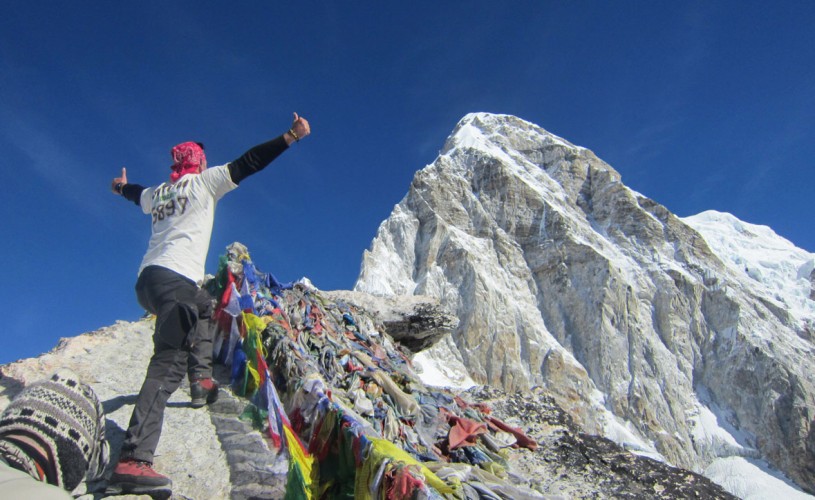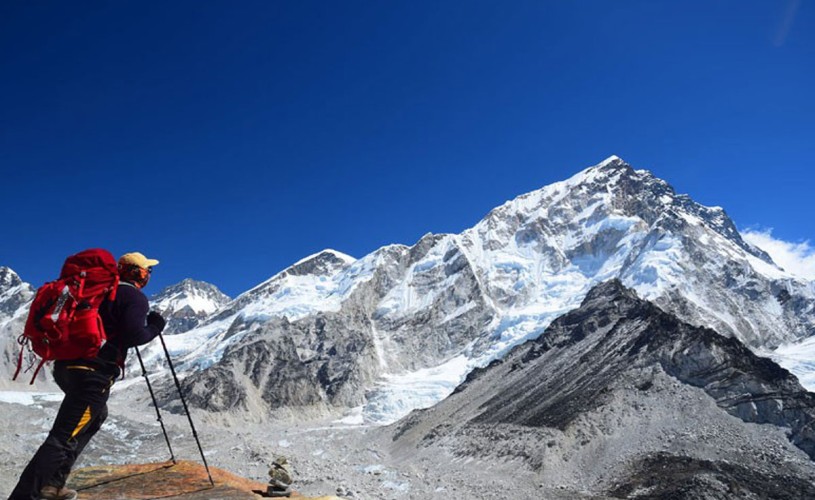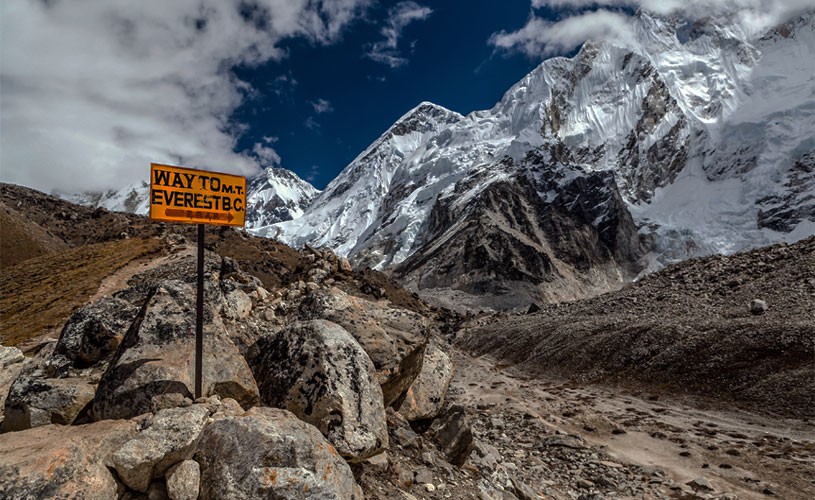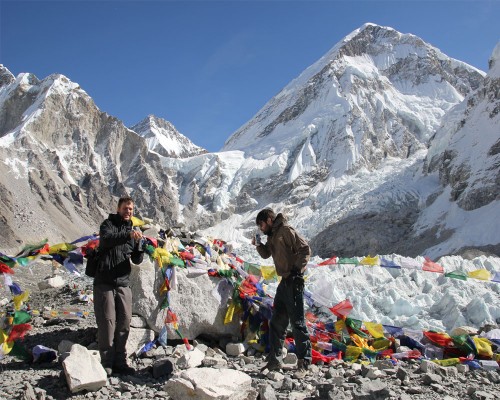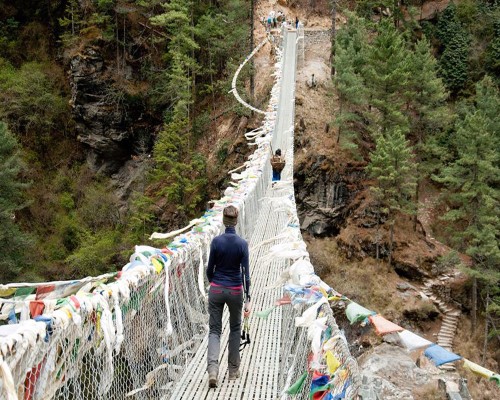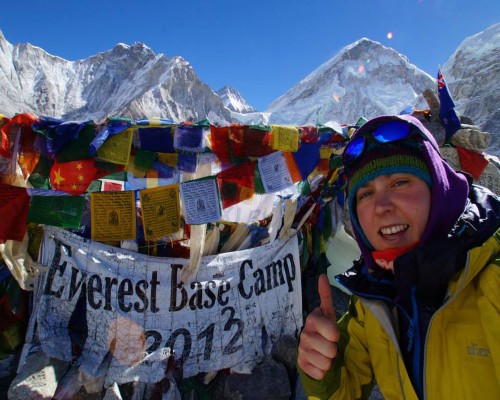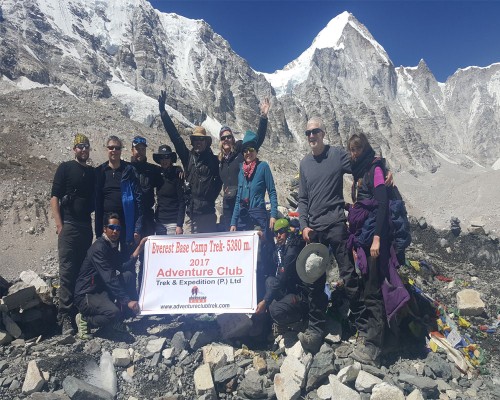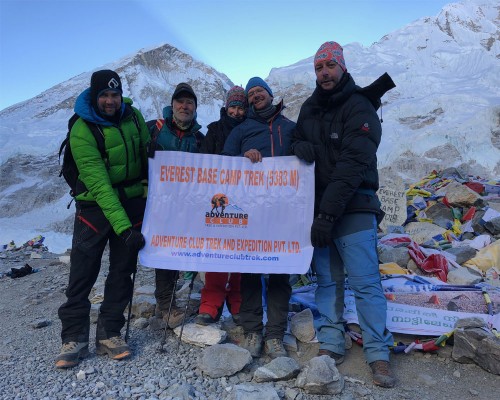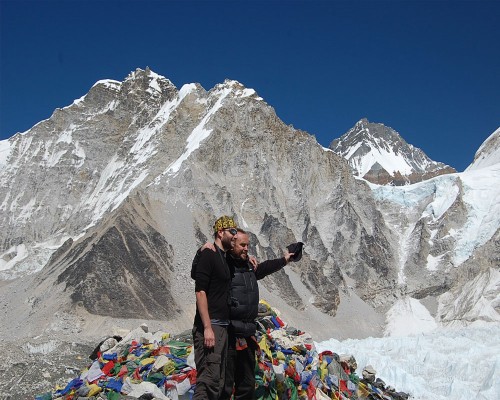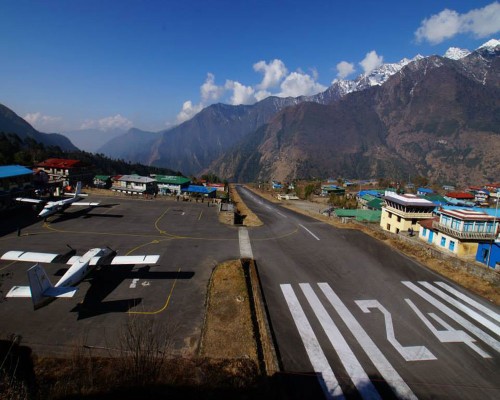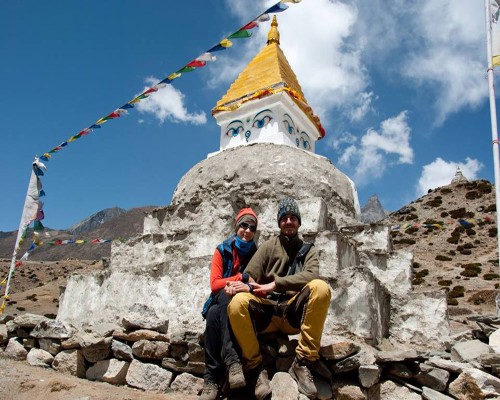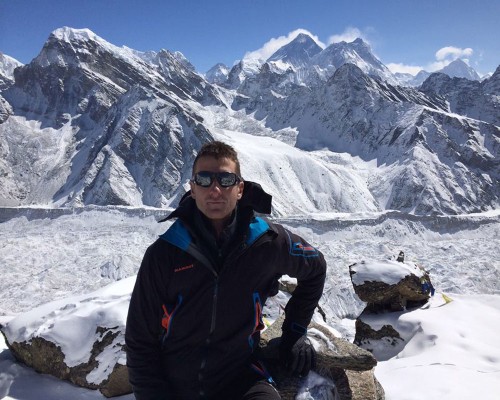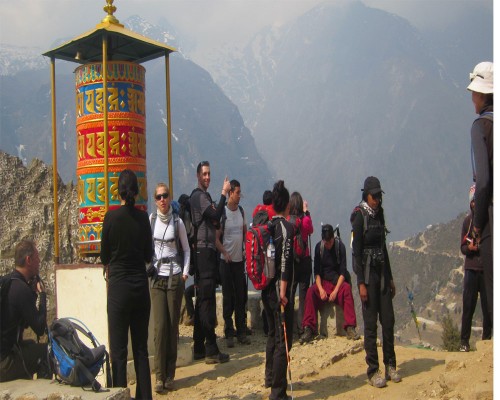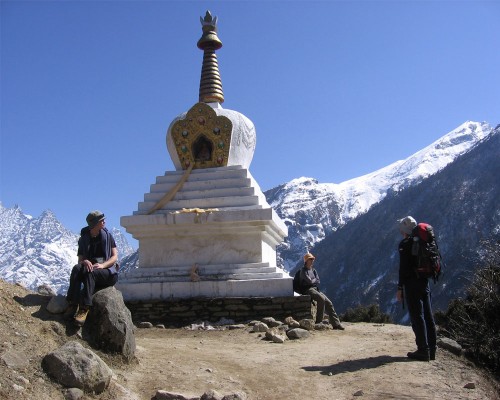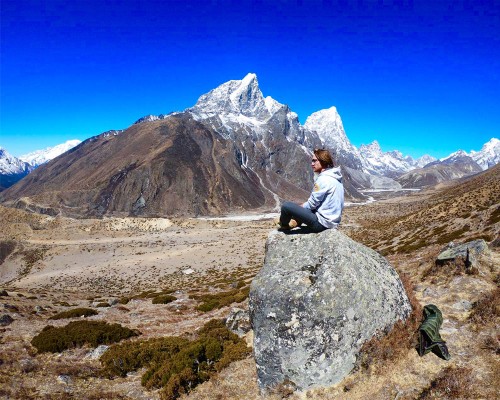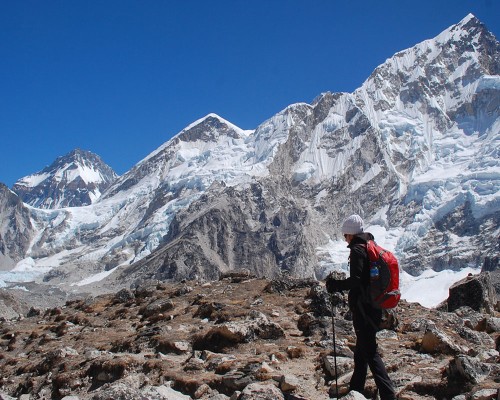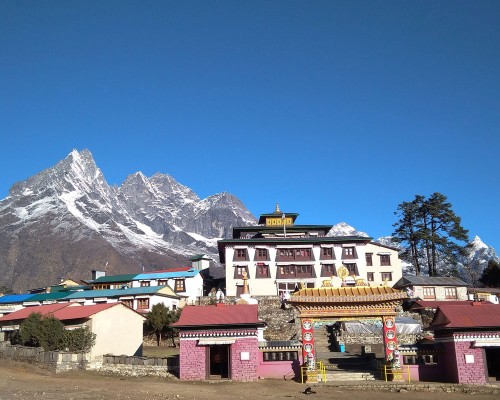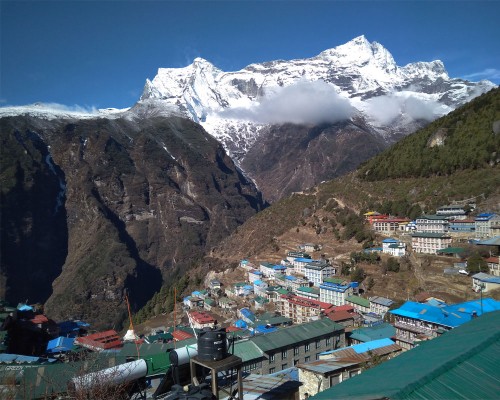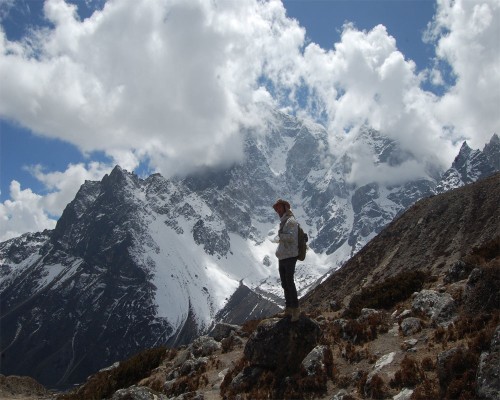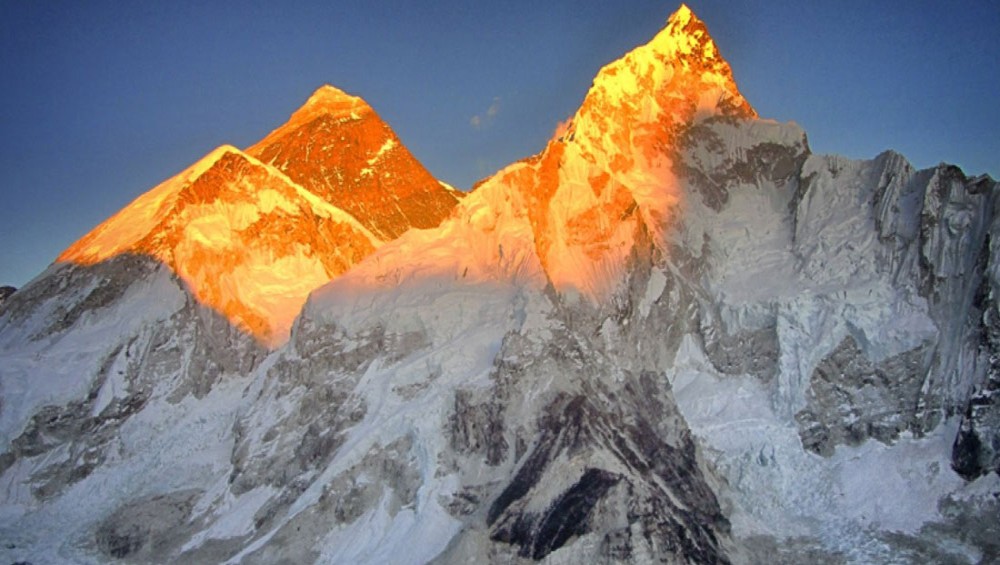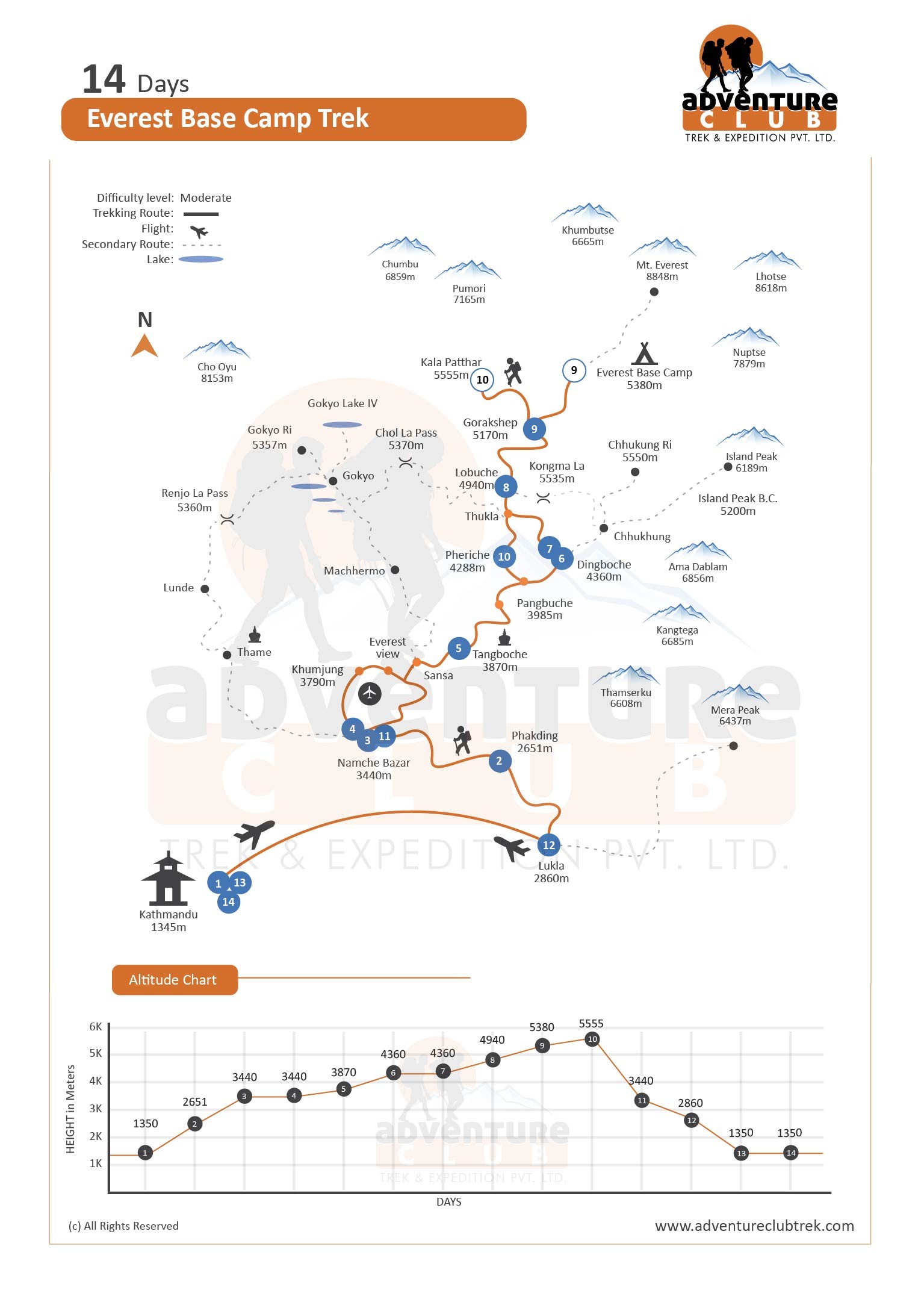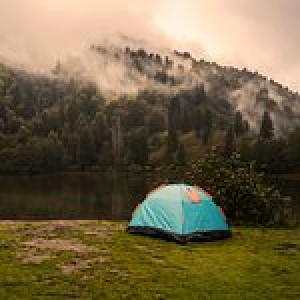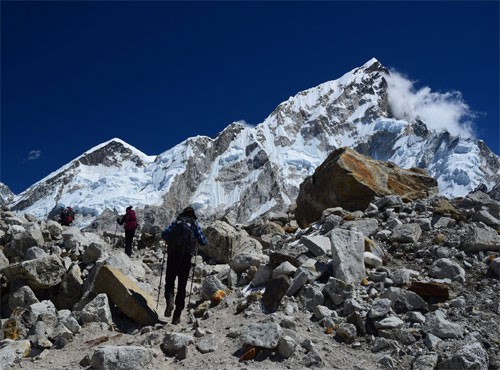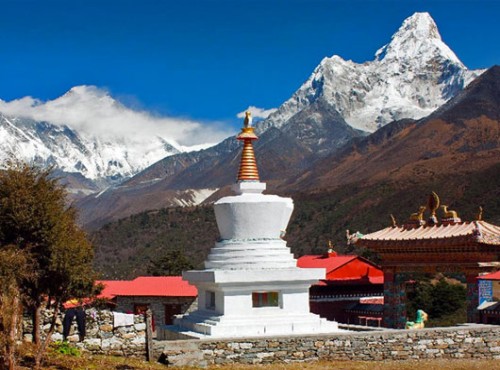Everest Base Camp Trek 14 Days Highlights:
- Enjoy breathtaking aerial views of the Himalayas en route to Lukla.
- Embark on an adventure to the base of Mt. Everest Base Camp.
- Explore the wild beauty of Sagarmatha National Park.
- Namche Bazaar is the gateway to the Everest region and a cultural hub.
- Immerse yourself in the vibrant Sherpa culture and traditions.
- Hotel Everest View, the world's highest hotel, offers spectacular mountain views.
- Experience tranquillity at Tengboche Monastery.
- Witness the majestic Khumbu Glacier and Khumbu Icefall.
- Trek to Hang Peak (5,083m) and Kala Patthar (5,555m) for picture-perfect views.
- Stunning Views of Mt. Everest, Ama-Dablam, Lhotse Nuptse Thamserku Cho Oyu and more.
Everest Base Camp Trek 14 Days Cost & Price Details 2025/2026
The Everest Base Camp trek is a lifetime journey that takes you far from the comforts of daily life, offering a unique opportunity to experience the real beauty of the Nepal Himalayas while challenging your physical and mental strength. The path to Everest Base Camp, situated at an elevation of 5,364 meters, guides you over suspension bridges spanning vast chasms, through secluded Buddhist monasteries, and into the vibrant heart of Sherpa heritage.
As you journey alongside global adventurers and photographers, you will encounter breathtaking views of peaks such as Cho Oyu, Lhotse, and Makalu—three of the world’s tallest summits. Evenings spent in traditional teahouses provide a welcome respite, complemented by the assurance that experienced guides and porters are dedicated to your safety and enjoyment. This trip not only helps the local economy but also empowers your inner strength, while cultivating meaningful friendships and unforgettable memories that stay with you forever.
Embark on the thrilling 14-day Everest Base Camp Trek, an unforgettable journey through the stunning Himalayan landscape and rich Sherpa culture. Traverse suspension bridges, explore hidden Buddhist monasteries, and experience the beauty of the Solu-Khumbu district in Province 1, home to Mount Everest and Sagarmatha National Park.
Everest Base Camp Trek 14 Days offers breathtaking views of Everest and other majestic peaks like Lhotse, Nuptse, and Pumori. Immerse yourself in the Sherpa community's culture while trekking through this awe-inspiring region, known for its Tibetan-influenced traditions. The 14-day trek leads you to Everest Base Camp; the highlight is reaching Kala Patthar for its stunning sunrise and panoramic vistas. Explore the diverse flora and fauna of Sagarmatha National Park along forest trails.
Our day typically begins around 7- 8 am, when we gather for breakfast in the teahouse (lodge) dining room. Breakfast orders are placed the night before to ensure efficiency so the teahouse owner can have them ready on time. After breakfast, we prepare our duffel bags for the porter to carry. In contrast, we carry only a day pack with essentials like water, sunscreen, and snacks. Following breakfast, we followed our guide along a familiar route, as the guide would have briefed us on the day's highlights the night before.
We continue hiking until we reach a lunch spot, usually a tiny settlement along the trail. After lunch, we resume our hike until we reach the teahouse where we'll spend the night. Upon arrival at the teahouse, we select our dinner items from the menu before unwinding with fellow travelers or journaling. The guide will provide insights into the route and landscape for the following day during or after dinner. Before retiring for the night, placing our breakfast orders for the following day is essential.
The Everest Base Camp Trek Journey begins with a thrilling flight to Lukla and a hike to Phakding. Continue to Namche Bazaar, Tengboche, and Dingboche for acclimatization and scenic hikes. Proceed to Lobuche before trekking to Everest Base Camp via Gorak Shep. Descend to Pheriche, Namche, and Lukla, concluding the journey with a flight back to Kathmandu.
The 14-day Everest Base Camp Trek provides similar amenities to the 16-day option. The 16-day trek suits physically fit people with experience at high altitudes. Two alternative options allow you to avoid needing to retrace your steps to descend from Gorekshep back down into Lukla. First, a 12-day journey with an exclusive Helicopter Return is offered. There's also an 11-day trip with a Helicopter Direct Return from Gorekshep to Kathmandu. Do not miss this opportunity to experience a once-in-a-lifetime adventure by trekking to Everest Base Camp.
Everest Base Camp Trek Cost Breakdown For 2025/2026
The Everest Base Camp trek costs $1589 per person on a group-sharing basis for 2024, 2025, 2026, and beyond. This pricing is for group treks from Kathmandu, but we also offer private and solo trekking options. Our package includes airport transfers, exclusive transportation, flights to Lukla, professional guides, porters, lodging, meals, permits, and other essential services.
Trekking costs vary based on the type of package—group, private, or solo—ensuring flexibility for different preferences and budgets. For groups of up to 14 trekkers, the price remains as stated, but if your group exceeds 15, feel free to contact us for customized pricing and options tailored to your needs.
| No. of Person | Price Per Person |
| 1 pax | US $1589 |
| 2 to 3 pax | US $1389 |
| 4 to 7 pax | US $1299 |
| 8 to 11 Pax | US $1249 |
| 12 to 14 Pax | US $1219 |
Everest Base Camp Group Trek: Fixed Departures
Join our 14-day Everest Base Camp group trek, ideal for solo travelers, couples, trios, or any group size. We offer a group joining option where you'll trek alongside fellow adventurers. The package includes 2 nights in Kathmandu, round-trip flights to Lukla, a professional guide, and a porter shared between every two trekkers. This budget-friendly option lets you enjoy the trek while sharing resources with others. For a more exclusive experience, consider upgrading to the Everest Luxury Trek for premium accommodations and services.
Private Everest Base Camp Trek: Your Personalized Adventure
The 14-day private Everest Base Camp trek offers a fully customized experience, perfect for private groups, families, or solo travelers. Available year-round with daily departures, this option allows you to enjoy private accommodations, gourmet meals, and added flexibility to trek at your own pace. With no need to wait for or adjust to other travelers, you can enjoy a journey tailored to your preferences and style. For more details, explore our useful information section or contact Birendra, our travel expert, for personalized advice.
How difficult is the Everest Base Camp Trek 14 Days?
Trekking to Everest Base Camp seems challenging, but it is achievable as it has been done by thousands of people every year from around the globe. It requires effort and determination, but most people can do it with proper planning. During the trek, you'll need to walk for about 5 to 6 hours each day. The journey typically begins around 8 am and ends by 3 pm, depending on your destination. Along the way, you'll encounter different terrain and witness stunning panoramic views. The breathtaking sights of the Everest Region make the trek worthwhile. Although trekking and hiking can be challenging, those willing to prepare and stay determined will be able to succeed.
What is the best time for Everest Base Camp Treks?
The best seasons for the Everest Base Camp trek include spring and autumn- specifically, from March to May and September to November. The weather is usually crystal clear, and the Himalayan views can be explored brilliantly. The days are warmer, and the nights are cold. In spring, the temperature of Namche Bazaar (3440 meters) will usually be around 3-9 degrees Celsius (37-48°F). In autumn, the temperature will sometimes go below zero at night, but days are fine for walking.
Winter becomes more adventurous to trek to Everest base camp as the temperature might fall below zero even during the day. The usual snowfall is expected up to Lukla. However, trekking in December and January are great seasons if you want fewer crowds. Monsoon is regarded as an off-season trek in the Khumbu region- Everest Base Camp. However, some lower-altitude treks can be done during the monsoon too.
What is the accommodation like During The Trek?
During your trip, you will stay in a 3-star hotel in Kathmandu. While trekking, your accommodation will be in teahouses or guesthouses along the route. The accommodations will be shared with another person of the same gender. If you prefer a private room, you can request it for an additional cost. The rooms provided by Adventure Club Trek will have attached washrooms up to Namche Bazaar. However, please note that after Namche Bazaar, teahouses only have shared washing and toilet facilities. Single rooms in Kathmandu and lower-elevation trekking regions are more accessible but may be scarce at higher elevations. Teahouses at lower elevations usually have hot showers powered by gas. In comparison, those at higher elevations offer hot water for bathing. If you want a hot shower, you may need to pay an extra $3 to $5 at the teahouses. After a long day of trekking, many people find this expense worthwhile.
What is the food like on the Everest Base Camp Trek?
Breakfast, lunch, and dinner will be provided during the trek, and breakfast will only be provided in Kathmandu. We host welcome and farewell dinners for our guests. During the trek, we have breakfast and dinner at tea houses or lodges where we spend nights, while there will be lunch at tea houses on the way. The teahouses offer a variety of hot drinks and meals. The typical meals are omelets and toasts, boiled or fried eggs, momos, vegetarian curries, pizza, macaroni, or chow mein. The Nepali traditional Dal Bhat consists of rice, lentils, and vegetables. We recommend that trekkers avoid meat on the mountain as it is unhygienic.
Drinking water on the Everest Base Camp Trek
We provide all the meals on the trek, but don't provide water. The best option is to treat the local water with chlorine/iodine tablets or a sterile pen. You can get free water from tea houses and along the trail. However, you'll need to treat it. Use the tablets only if they have dissolved completely (30 minutes). Mineral water is available along most trails. Mineral water costs USD 1 per liter at tea houses at lower elevations but can be up to $4 at higher altitudes.
Electricity, WIFI, and Battery Recharge in the Everest Region
While trekking in the Everest region, you can recharge your phones, laptops, and iPads using micro-hydropower and solar panels available by paying a bit fee. However, please note that Wi-Fi hotspots are unavailable along the trekking trail after Namche. The only establishments offering complimentary Wi-Fi are Starbucks Coffee in Lukla and Everest Bakery in Namche. Beyond these locations, internet services require payment, with costs increasing as you ascend in altitude.

